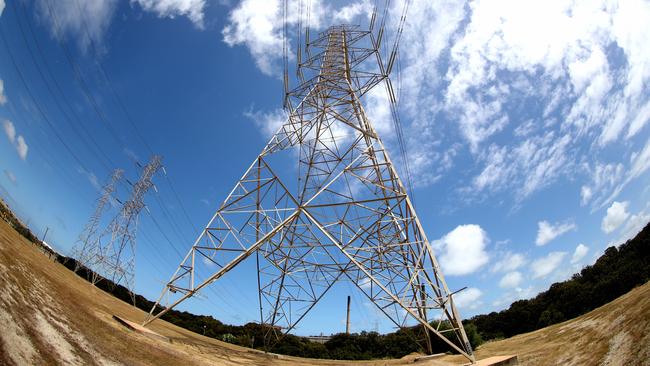Customers dudded as regulator confiscates Weston Energy’s gas supply – and hands it to AGL


These companies – without the protection of the low fixed gas prices they had negotiated – are now facing huge losses.
In a bizarre twist, Exxon and Santos who were providing the low priced gas have been ordered by the regulator to supply that gas not to the impacted sections of industry but rather to a so-called “retailer of last resort” – none other than AGL Energy.
As it is allowed to do, AGL is now offering to the market the low-priced gas transferred to it from Santos and Exxon at prices three to four times the amount it is required to pay.
There is no question that the regulator is operating within the law and that the gas was used to bridge shortfalls but – in my view – it is clearly not operating in the national interest because the damage to parts of the food processing and other industries will be crippling.
The regulator’s initial actions actually took place soon after the election in May, so there is no criticism here of new Energy Minister Chris Bowen.
But the community will almost certainly demand that he attempt to find a legal way to enable the regulator to act in the national interest. Meanwhile, as things now stand, AGL shareholders could be set for a bonanza as they receive the low priced gas from Exxon and Santos and sell it at market prices.
The confiscation of the gas took place on May 31 when the AER issued an order to both Exxon and Santos requiring them to “make available” to AGL the gas that Exxon and Santos were contracted to supply to Weston Energy. Weston had earlier had its licence to distribute gas revoked by the AER. The Santos and Exxon gas was originally purchased by Weston to satisfy the needs over the next year of about seven per cent of industrial gas users.
Weston built up that market share with a concerted drive to offer fixed priced gas contracts – sometimes with a fixed escalation cap – to important sectors of the industrial market.
Weston were able to make these offers because they secured fixed price supplies from both Exxon and Santos. Not all Weston’s market share was based on fixed priced contracts but it was a significant part. When the Energy Regulator ordered Exxon and Santos “make available” to AGL the gas that was earmarked for Weston customers it meant that AGL effectively took their place and will gain the benefits that would otherwise have been received by key segments of Australian industry. The word “confiscated” has no legal standing in this matter but I believe it appropriately describes the regulator’s May 31 actions.
I do not believe the companies that have been savaged by the regulator understand that their gas was simply transferred to AGL on May 31. When they do realise what actually happened, they may reassess their current reluctance to come out into the open.
But one company has had the courage to reveal its plight – the textile clothing group Flicker’s. It secured gas at $9.60 per gigajoule from Weston and is now being offered gas by AGL and others at around $40 per gigajoule – which is the market rate.
Flicker’s makes the apparel for Australian cricket test blazers. Whether the company survives the regulator’s confiscation will depend on whether the cricket authorities and other Flicker’s customers are prepared to pay much higher prices for their product.
What is happening to Flicker’s as a result of regulator’s confiscation is being repeated in extensive areas of the food and many other industries. Some former Weston food processing customers will go overseas where producers have the advantage of accessing low-priced Russian gas.
There were two basic fixed priced contracts offered by Weston. The first was a standard fixed-price contract like the one signed by Flicker’s. The second standard Weston contract was at a fixed price plus a capped margin. The amount of these partially fixed price contracts is not known. It is also not known whether Weston took the risk on the cap itself or whether it took out a hedge contract. In the electricity market we are seeing a duplication of the confiscation process taking place which sometimes has left failed retailers with very valuable hedge contracts that they are able to cash in to boost their cash rather than to help their customers.
If there are valuable gas hedge contract in existence in the Weston saga then they should be used for the benefit of Weston customers. The regulator needs determine whether there are valuable hedge contracts buried in the Weston morass.
To be fair to the AER, the body was implementing legislation that was enacted at a time when the current circumstances were never envisaged. I put the following questions to the regulator:
• Is the AER aware of the damage the regulator created to parts of the Australian industrial fabric when on May 31 it exercised its powers under the act to order Exxon and Santos to supply to AGL gas previously contracted to Weston Energy?
• Is the regulator aware of the profit that it handed AGL in this process?
• What attempts has the regulator made to recompense Australian industry for the damage the it created by this action?
• Has the regulator informed Energy Minister Chris Bowen of the damage that has been created by the action? Has the regulator asked for Bowen’s assistance to recompense those that have been impacted by its decision?
• Will the regulator ask AGL to return the profits they are making to the parts of industry who have been hit hard by the regulator’s effective confiscation of gas?
In a statement, the AER said it had “followed the proper and normal regulatory processes in administering the retailer of last resort scheme to ensure the continuous supply of gas to the customers of failed retailer Weston Energy”.
“The AER appointed AGL and Origin as the retailers of last resort for this event and took the
necessary steps to achieve the objectives envisaged by the scheme, that is that the gas follows the customers.
“The AER subsequently directed that the gas previously available under contracts with Weston be supplied to AGL, the designated retailer of last resort that became responsible for the majority of Weston’s customers.
“It was necessary for the AER to issue this direction to ensure continuity of supply to Weston’s former customers, in circumstances where the AER was of the opinion that there was not sufficient gas available in the short-term trading market at that time.”





The Australian Energy Regulator has used its legislative powers to effectively confiscate gas that had been allocated to supply low fixed priced contracts with a large number of prudent enterprises led by the food processing industry.